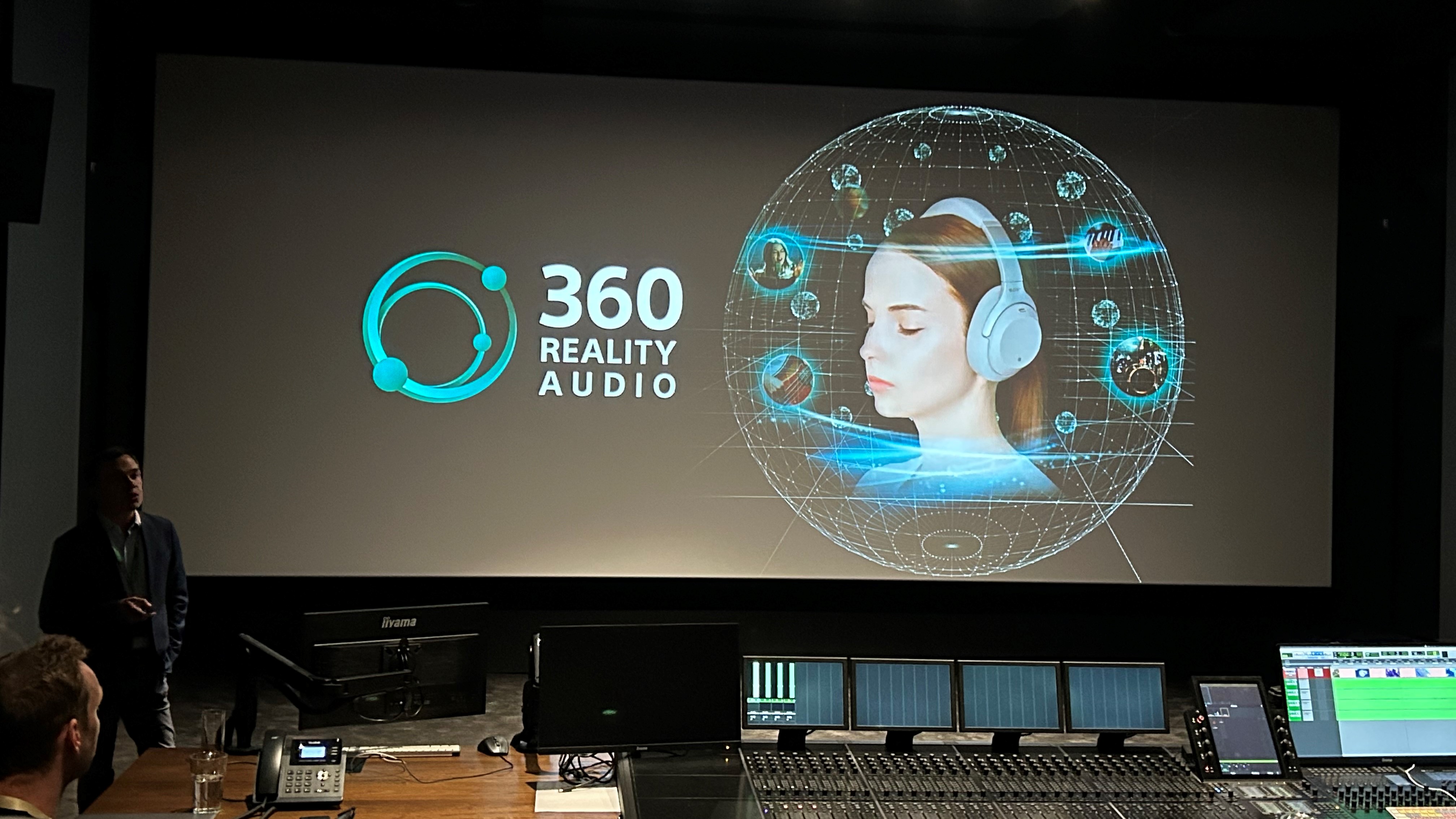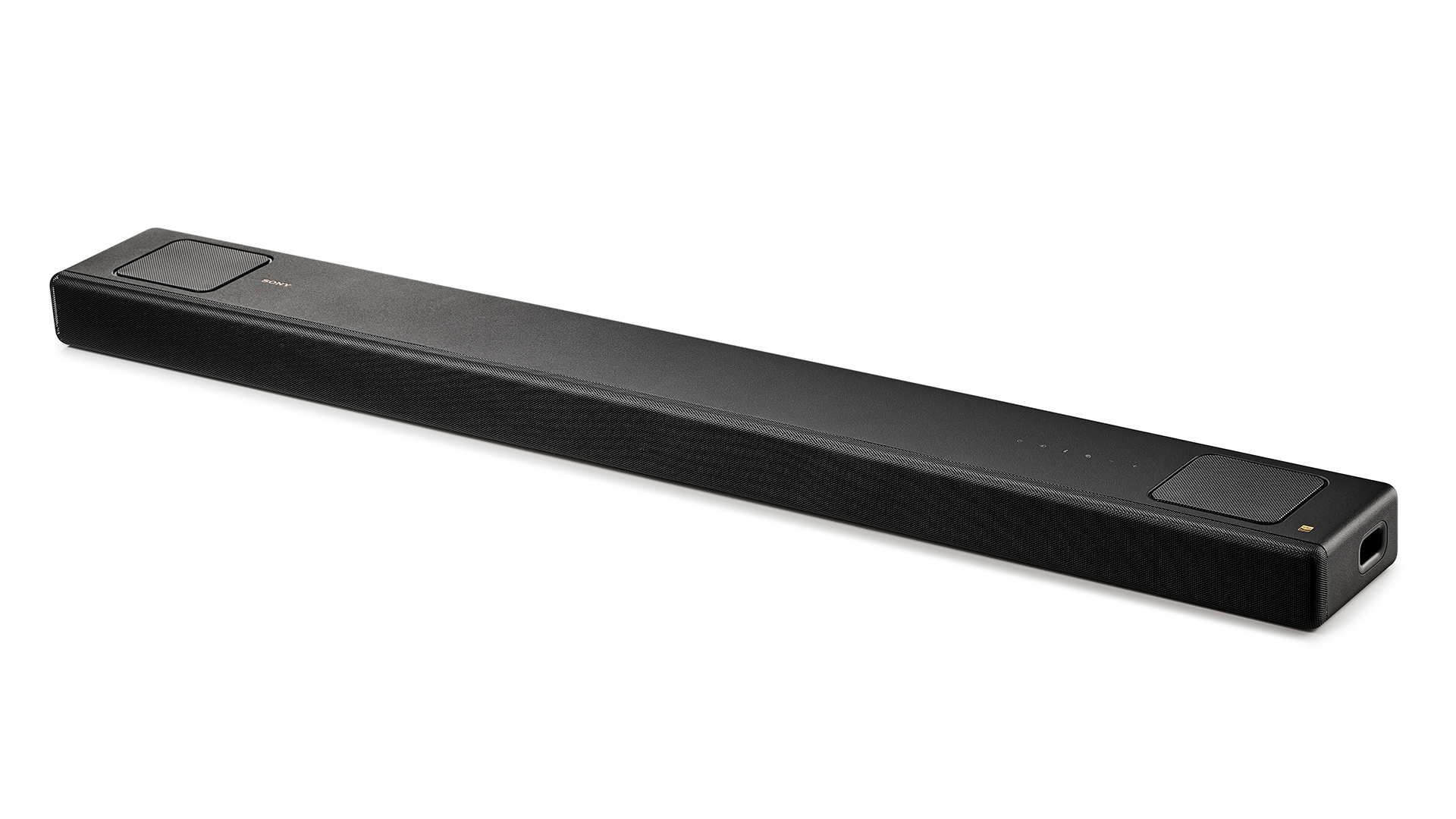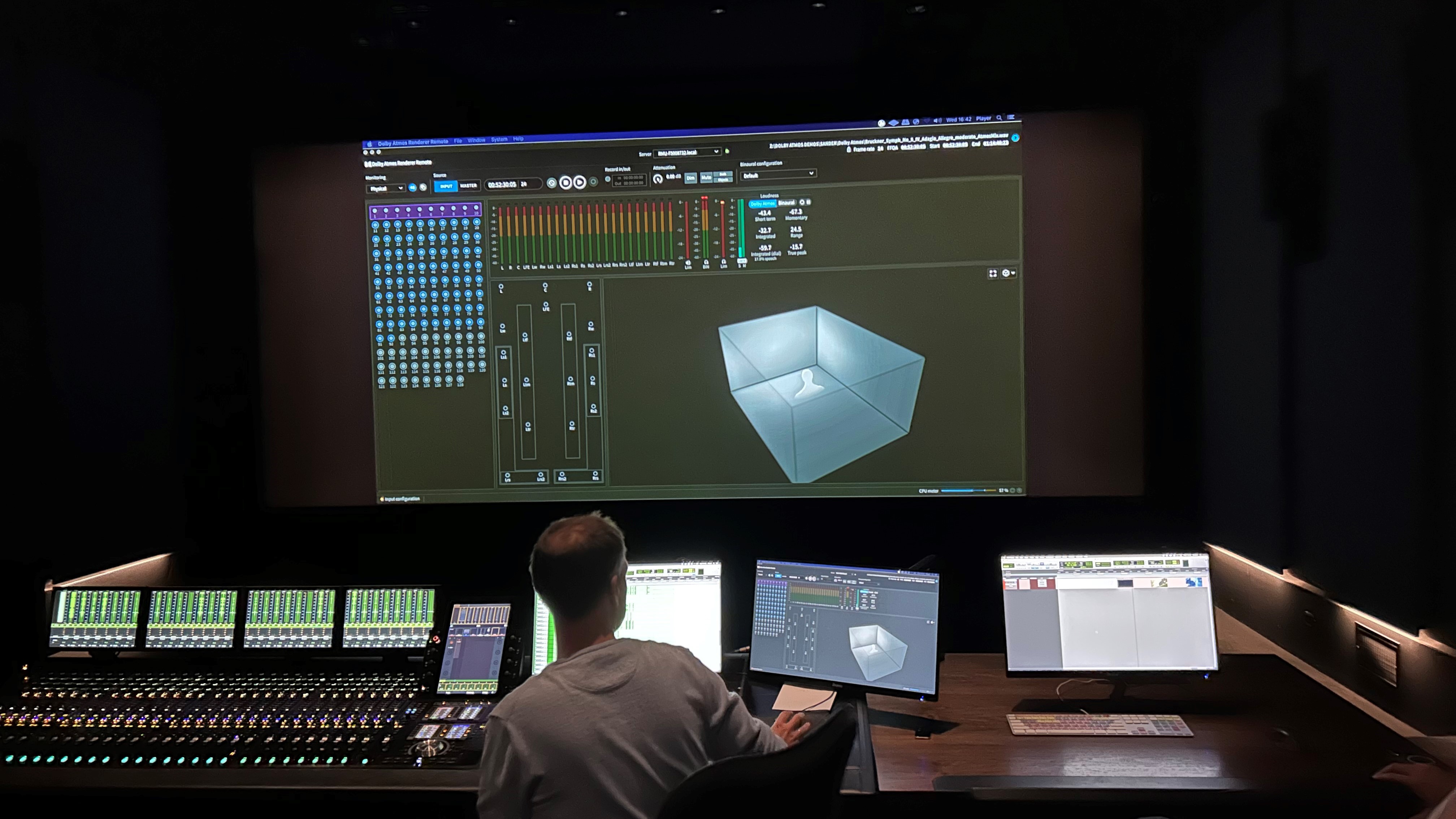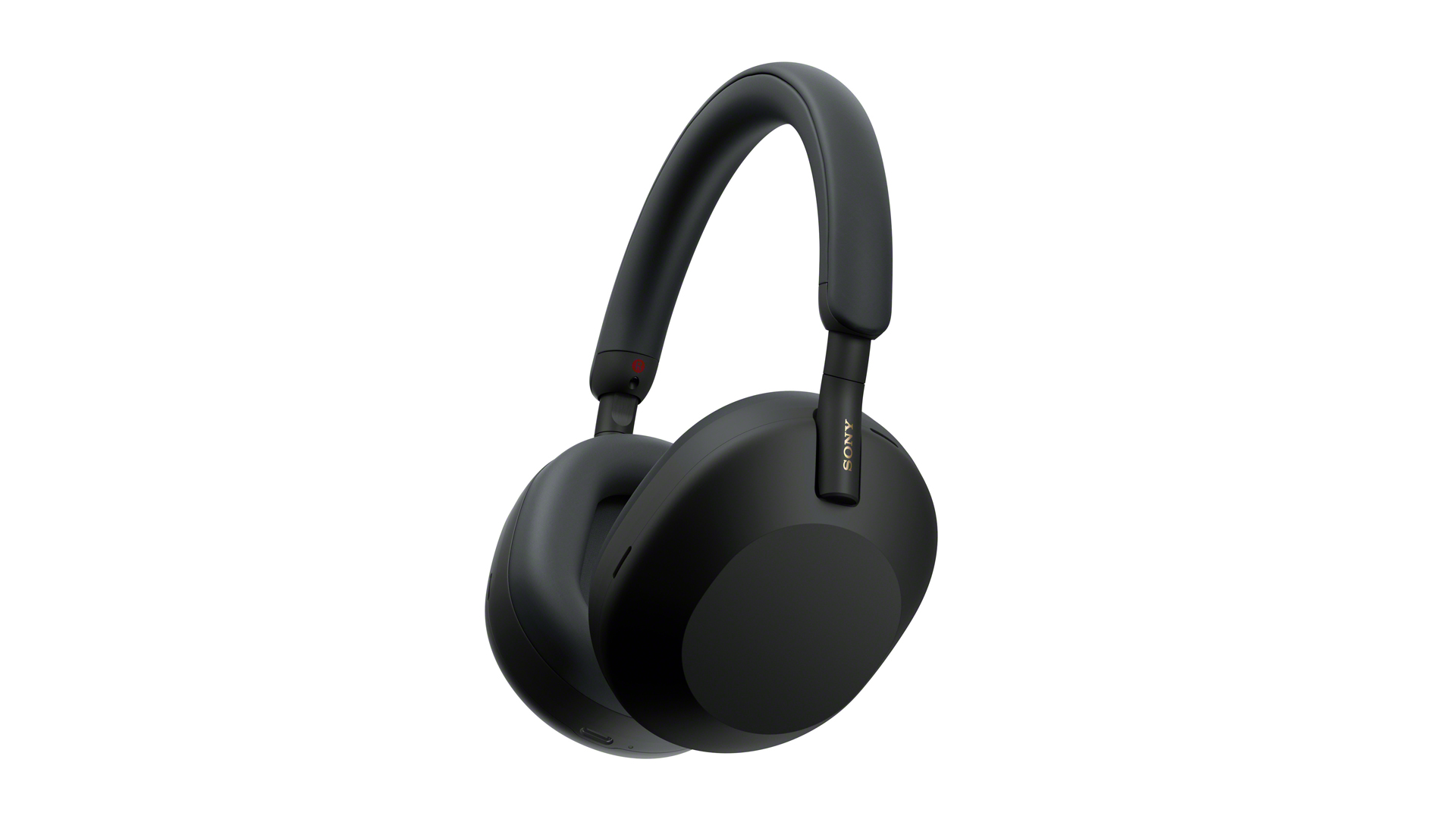I've seen how Sony 360 Reality Audio works – and now I'm a believer
Like Dolby Atmos, Sony's 3D audio format can bring immersive surround sound to the home, conveniently and affordably

I recently had the opportunity to accompany Sony to The Netherlands for a deep-dive into what Sony refers to as 360 Spatial Sound Technologies, which is an umbrella for a number of 3D audio features, including 360 Reality Audio. Led by industry experts in a specialised Dolby Atmos-certified recording studio, there was no way I could turn that down.
Finding out how exactly Sony's immersive audio technologies work, how they're being implemented into many facets of entertainment, and indeed the potential they possess was fascinating – and, as you might expect, everything sounded pretty sweet in a room equipped with 51 speakers firing in practically all directions.
STMPD Recording Studios in Amsterdam is undoubtedly one of the most innovative and advanced creative venues in the country, with a dedicated Atmos Premier Studios mixing theatre that is one of just nine in the world. Here, creatives mix Dolby Atmos content for home and theatrical use, as well as 7.1 and 5.1 formats.
This is where I got my first taste of truly immersive 360-degree audio, and while it has now spoiled the more standard forms of cinematic audio for me, it sets the scene for what Sony is trying to accomplish with its 3D sound technologies on its range of soundbars and surround speakers.
360 Reality Audio – what is it good for?

Sony’s HT-A7000, HT-A5000 and HT-A3000 were the (hardware) stars of this particular show, as all three soundbars support the 360 Reality Audio format and – if you add optional satellite speakers – 360 Spatial Sound Mapping technology. Sony’s goal with these soundbars and add-ons (SA-RS5 satellites were used during the demos) is to form a system that can deliver enveloping sound while retaining a form factor that is less intrusive and more convenient than a traditional surround-sound speaker package. The company's innovative HT-A9 system also supports 360 Spatial Sound Mapping (right out of the box, in fact), but wasn't used at the event.
While the soundbars themselves were front and centre, the 360 Reality Audio format and 360 Spatial Sound Mapping technology were the two integral aspects behind the scenes. Sony explained how the 360 Reality Audio format could be utilised for music, and how it and movie audio formats such as Dolby Atmos can be reproduced at home via 360 Spatial Sound Mapping. Sony was keen to reiterate that 360 Reality Audio isn’t here to complicate the audio space. It claims to use a very similar process to Dolby Atmos, which is also a hot topic in the world of immersive music.
Sony started with a music demo to highlight the strengths of the soundbars and format. Spatial, immersive, 3D – whatever you want to call it – audio is not new in the music arena, with Dolby Atmos and Apple’s Spatial Audio processing finding their way onto studio engineering software and consequently the music streaming services we use every day. But seeing how Sony's software can influence the core production of music was fascinating.
Get the What Hi-Fi? Newsletter
The latest hi-fi, home cinema and tech news, reviews, buying advice and deals, direct to your inbox.
Mastering engineer Maria Triana demonstrated songs that she mixed into 360 Reality Audio, and talked through the process of allocating certain components of a song to certain spatial locations within the mixing software. Now, I admit I am no expert in the mixing and mastering process of music production, but having the music playback accompanied by the visual representation of the 360 Reality software made it more easily digestible and it became obvious what Sony’s ambitions are with the technology.
Maria’s 360 Reality Audio mixes were rich and encompassing, with some tracks introducing enveloping choirs and others featuring instrumentation placement that felt like I was sitting in the room during the track's recording. It was one big tick in the 'immersive' box from me.

Sony explained that 360 immersive audio is achieved with its soundbars (again, as long as you add the optional surround speakers) via its 360 Spatial Sound Mapping system. After an automated calibration, the system's processing creates “phantom speakers” that the real speakers project to, giving the illusion of genuine sound coming from angles where speakers do not physically exist, as well as creating a smoother gradient of sound as it moves around a space. It's a clever system that helps to mitigate the compromise of not having dedicated ceiling-mounted speakers, though naturally the effect you can get from the real deal if you throw money and space into the set-up is incomparable
Sony's 360 Spatial Sound Mapping flourishes when it comes to a variety of different forms of entertainment, allowing for more immersive sound when it comes to gaming, movies and sport. Gaming sounded magnificent, which is perhaps to be expected considering space and location are pivotal when controlling your character on screen. However, in a very fun demo involving Gran Turismo 7 on the PS5 and a set of rear-firing speakers connected to the HT-A5000 soundbar, it really came into its own. Tyres screeched and the engine rumbled in convincing proximity to where I was sitting in the gaming chair. Despite wiping out in spectacular fashion, the demo was intense and thoroughly enjoyable... even if I didn’t set a record lap time.
Its value for sports somewhat surprised me. The use of spatial audio really had a profound effect on making televised sports immersive, something I often find lacking. Watching football at home can never relay the atmosphere and tangible emotion found in a stadium, of course. But Felix Krückels, a mastering engineer who utilises 360 audio in the sports field, so to speak, described and demonstrated how he mixes Bundesliga games to make for a more immersive at-home experience. He likened the playing field to a stage, explaining how the positioning of crowd noise was key to creating an immersive soundfield.
This is essentially accomplished by splitting the two sides of the stadium into different zones for spatial sound. Much like in a real football stadium, fans are divided into separate areas of the stadium, and the same philosophy is taken when arranging the audio, with the fans placed on one of the two sides and the pitch taking centre stage. When a goal was scored, I could easily pick out the goal-scoring team's supporters and which side they were sitting on in the stadium – purely on sound alone.
The day finished on a high with a demonstration of a 360 spatial audio film demo - arguably the technology's most common use case on a soundbar. There was a very convincing immersive impact on certain scenes we were presented with, most notably in a scene from The Batman. When the titular hero grapple-hooks up an elevator shaft, the sound effect of the grapple firing, shooting up the shaft and locking into place seemed to realistically travel overhead, arching from the soundbar at the front towards the rear speakers positioned just behind us.
Want to try 360 Reality Audio for yourself?

Be prepared to jump through some hardware and software hoops if you want to try 360 Reality for yourself, but Sony thankfully supports a decent number of apps and devices. When it comes to 360 Reality Audio music streaming, you'll need either Tidal, Deezer, Amazon Music HD or nugs.net to get the immersive music experience.
To listen to 360 Reality Audio on headphones, you'll need one of Sony's flagship pairs, such as the WH-1000XM3, WH-1000XM4 and WH-1000XM5 noise-cancelling headphones, as well as the WF-1000XM3 and WF-1000XM4 wireless in-ears.
It's a similar story when it comes to speakers too, with Sony's SRS-RA5000 and SRS-RA3000 having 360 Reality Audio support as key features. The unique, Atmos-equipped SRS-NS7 neckband speaker also supports 360 Reality Audio if you want a portable immersive speaker solution. Sony also supports one third-party speaker, the Amazon Echo Studio, which pairs nicely with the aforementioned Amazon Prime Music integration.
The HT-A3000, HT-A5000 and HT-A7000 soundbars all also support 360 Reality Audio out of the box, though you'll need to add dedicated surrounds (the SA-RS5 or the SA-RS3S) if you want to also take advantage of 360 Spatial Sound Mapping, as these allow for the phantom speakers – Sony reiterated that the soundbar alone cannot create these. The HT-A9 speaker system does all of this right out of the box, as it comprises four speakers placed around your room and is able to fill in phantom speakers between the physical speaker placements.
What's next for 360 Reality Audio and 360 Spatial Sound Mapping?
With 360 Spatial Sound Technology, Sony set out to create a more compact and affordable way of enjoying immersive sound at home and, from a technological point of view, strongly appears to succeed in doing that. Even I was surprised as to how convincing it sounded coming from a soundbar-based setup.
Obviously, if you have the space and budget for a full, decent Dolby Atmos-compatible speaker set-up then it will outperform this Sony soundbar and 360 Reality Audio pairing. This hardware and processing partnership is, after all, about helping to bridge the performance gap between 'standard' stereo/surround soundbar sound and the heady heights that full-blown immersive surround set-ups have reached, for those who cannot accommodate the latter.
Sony's 360 Spatial Sound Mapping technology is another integral piece in this immersive puzzle, and it also seriously impressed me. With sweeping sounds that seemed to move organically between speakers without disorienting jumps; the surround capabilities of a soundbar and just two satellite speakers was genuinely impressive.
And when it comes to Sony's immersive audio format, I would like to see the company push it further than just music. A 360 Reality Audio option for movies could be the way to topple Dolby from its impenetrable audio throne. While Dolby Atmos is currently the dominant force in the immersive audio landscape, I want to see Sony push 360 Reality Audio in innovative ways, giving it space to thrive and not wither away in Dolby's immense shadow.
MORE:
Everything you need to know about Sony 360 Reality Audio
Sticking with Dolby? Here are the best Dolby Atmos soundbars
Lewis Empson is a Senior Staff Writer on What Hi-Fi?. He was previously Gaming and Digital editor for Cardiff University's 'Quench Magazine', Lewis graduated in 2021 and has since worked on a selection of lifestyle magazines and regional newspapers. Outside of work, he enjoys gaming, gigs and regular cinema trips.
